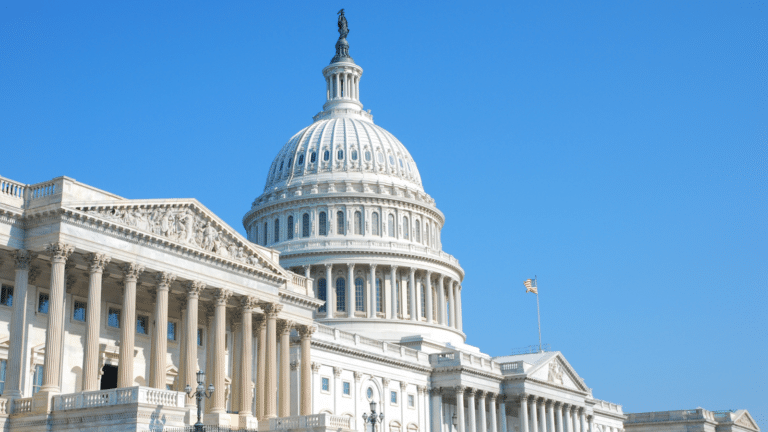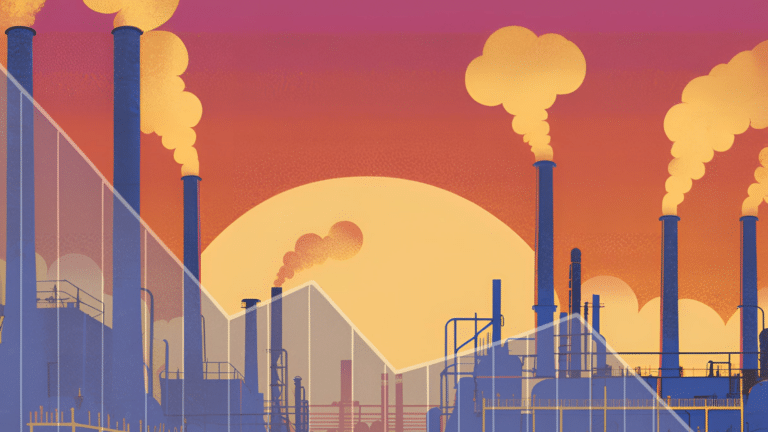download the PDF
The US withdrawal from the Joint Comprehensive Plan of Action (JCPOA) is now complete. Though the sanctions recently reimposed largely date from the Obama administration, the Iran policy of the United States now belongs only to Donald Trump.
Indeed, though some in his orbit may argue that the United States is laboring still under the problems created by the JCPOA, the confidence of the Trump administration in withdrawing from the agreement was based in no small part on the assertion that US partners would come along with the United States regardless of their own views or interests. Likewise, the United States bet that Iran probably would not retaliate immediately by restarting its nuclear program and that, if it did, the United States would come out of the resulting crisis much the better for matters. These two positions will be tested on the world stage in the coming months.
How Iran, US allies, and US competitors react to the stresses brought about by Trump’s decision will have far-reaching impacts for geopolitics, global energy markets and security, and financial markets. This brief outlines five guideposts to watch out for over the next year as the situation between Washington and Tehran inevitably heats up.
1. The United States will find enforcement of its sanctions a far harder task than it may expect.
For some, the reimposition of US sanctions is the last word in an argument about foreign compliance and cooperation: now that the measures are in place, corporate compliance officers will do much of the work by forbidding transactions with Iran that even come close to the line, much less cross it. By virtue of the power of the US economy, banks and companies will forego business with Iran. Those few who resist will either be sufficiently marginal so as to make little difference or quickly put back in line by tough US enforcement.
The reality is a bit more complex. To be sure, this story is true for global banks and companies. Those institutions have been sufficiently scared by the imposition of large fines against banks that violated US sanctions in the past that they are unlikely to challenge the United States. The risk/reward calculations inherent in the limited amount of business possible with Iran—even after the JCPOA was agreed upon—were insufficient to prompt major investment before Trump withdrew the United States from the agreement. The retreat of those that had considered or consummated investments in Iran has been clear and unambiguous; they will not be returning to Iran any time soon.
But this is only part of the picture. Two other issues will complicate US enforcement.
First, the fact that Europe has decided not to cooperate with the United States in restarting pre-JCPOA sanctions will make the US enforcement effort that will now be required far more complex. Prior to the JCPOA, the United States and Europe were on the same side of the debate. Though some European—and, indeed, even US—companies were prepared to flout sanctions in order to make a buck in Iran, the United States and Europe were largely able to work together to police this behavior. The few designations that the United States made against European entities were limited largely to front companies or were made with the direct participation and support of European governments. For this reason, the imposition of sanctions was largely a conflict-free affair with Europe. A few cases did bubble to the surface in the 2010–2015 time frame—most especially the BNP Paribas sanctions. Generally, however, the facts were agreed upon and commonly understood even if the punishments were sometimes controversial.
Now, the United States and Europe have no such luxury. In fact, the European Union is directly courting potential sanctions evaders through the construction of a special-purpose vehicle (SPV) that may facilitate transactions that the United States would consider to be sanctionable. It remains to be seen whether this will in fact be the case or if the SPV will instead simply manage legitimate humanitarian transactions that otherwise find securing banking services hard. But even the possibility highlights a significant point: Europe will not help the United States police its nationals in their business with Iran. For those in Europe who find Iran an attractive place to do business and can identify ways to obtain essential services like banking and shipping, the United States will be left with few tools to stop them.
Second, the United States will have to add Europe to a list of other complex enforcement cases, like those of Dubai, Singapore, and Hong Kong. It will further stretch US enforcement officials, in particular, and will increase demands on US intelligence gathering and on the lawyers and experts who assemble the sanctions packages that make designations of individuals and entities a reality. For every entity or individual that gets through the net, the United States will face the domestic pressure of whether it is doing enough and the international risk that those on the outside of US law will see others making money and be willing to take their chances. (And, of course, the entire escapade will only add to dynamics that make sanctions overuse a real threat to the United States, as the author wrote about in a recent article with former Treasury secretary Jack Lew.) The United States may find in the years to come that its target list is growing notwithstanding its efforts and that its ability to respond quickly to new problems popping up will be impinged.
2. Oil prices may remain high, undermining the effect of US sanctions to some degree.
Taken in combination with other global dynamics—not least the possibility of a major clash with Saudi Arabia over the apparent murder of Jamal Khashoggi—oil prices over the short to medium term could hold near recent levels that are higher than those seen over the past three years.
Oil prices impact enforcement because high oil prices would help Iran weather the storm directly (as more expensive oil means that selling fewer barrels only hurts in terms of opportunity cost rather than as an absolute matter) and increase the odds of sanctions evasion.
As noted in July, Iran’s sales of approximately 2.4 million barrels per day (bpd) earlier in 2018 were netting approximately $65 billion in revenue at $70 to $75 per barrel of oil. At $100 per barrel of oil, Iranian sales of only 1.5 million bpd would be worth a sizeable fraction of this amount, at approximately $55 billion annually; of course, the benefits to Iran would accrue in a scalable fashion with every dollar in increased oil prices. Iran would surely prefer one to the other, but—having apparently set national budget figures on $57 per barrel of oil—Iran can make do regardless.
Obviously, if the Trump administration were more successful in securing reductions, then the pressure on Iran would be that much greater. Cuts from Iran’s exports by as much as 1.6 million bpd have been discussed by some observers, and the decision of European, South Korean, and Japanese importers to go to zero in November was a direct result of aggressive US pressure in the second quarter of 2018. It is more than what the author assessed would be likely in February 2018, at least within the first year of sanctions reimposition. But it is questionable whether further deep cuts will be possible. As a matter of government policy, China and India have refused to consider going to zero, and their purchases may add up to as much as 1 million bpd—in other words, the same amount as the Obama administration achieved in 2012–2013. Turkey is also on the bubble of cooperation and compliance with US sanctions, having its own serious issues with the United States notwithstanding the release of Pastor Brunson in early October. If 1 million bpd in exports does become an Iranian floor, then it is hard to see Iran making deeper concessions on its nuclear program or much else—as will be discussed further below—but the effect will still be to increase market nervousness and threaten supply stability, especially since the Saudis have been increasingly open about how they and OPEC cannot close the supply gaps created by cuts to Iranian exports, the situation in Venezuela, and so forth.
Of course, higher prices will also motivate some to take advantage of the offer of deep discounts that Iran is uncharacteristically advertising in a public way. Should 30–40 percent discounts be offered by Iran, then they may find a way to bring some of their otherwise locked-in production and exports back to the market. This would come along with the possibility of creating downward pressure on oil prices—as supply itself would be increased, reducing at least some of the tension—but depending on how much evasion Iran would be utilizing in its exports, the effects on price could be muted. In the 2012–2013 experience, Iran utilized ship-to-ship transfers and may have exported oil off of anyone’s books. A similar approach today could result in oil getting to market but without necessarily creating the sense of stability that would allow prices to fall significantly.
3. Iran’s turbulent political scene will remain such and give rise to hopes that regime collapse is near.
All of this might be manageable for an Iran with deep pockets and a sustainable form of government. But for many US sanctions advocates, neither condition persists at this time in Iran. Iran is racked with protests and demonstrations due in some part to its poor economy. President Rouhani, having based his future on a sustainable international agreement for sanctions relief that would permit domestic reform, is now being criticized from all sides, not least a somewhat jubilant hard-line segment of the government that always decried the possibility of negotiations. That this segment includes Supreme Leader Khamenei himself only adds to the tremors presently gripping the Iranian government. Indeed, every bad news story in Iran should be expected to give rise in 2019 to rumors that a revolution in the country is imminent.
But as others—especially Suzanne Maloney, who literally wrote the book on postrevolution Iranian political economy—have discussed, this is not the first time that Iran has faced such challenges. Iranian economic leaders often note that Iran has suffered dozens of various economic crises since the revolution, and yet—still—they remain in charge. Some observers, such as Karim Sadjadpour, have argued that this is because the Iranian government retains a readiness to inflict violence on its population that the population is unwilling to absorb. But regardless of the source, Iranian political stability has been stronger than most regime opponents have hoped. This may not persist, particularly if the economy hits new lows or if an unexpected political event, such as Khamenei’s death, were to occur. However, safe betting remains that Iran will be able to muddle along, counting on international turmoil, the fact that oil remains a desired international commodity, and basic economic self-interest to keep some amount of international business activity flowing.
It is also worth noting that, even should Iran’s government fall, the idea that it would immediately transition to a stable, peaceful, liberal democracy is absurd, not least because the people most in a position to take control after such a crisis would be those in the security services, the most hard-line segment of Iran’s government.
4. Should Iran’s present government remain in charge, the United States would likely become more aggressive in both its employ of sanctions and threats of other action.
Though the likelihood of Iranian political stability may please some inside of the Iranian government or international community (particularly those concerned that the chaos of Syria or Afghanistan could spread to a country of 80 million people), it would likely present the Trump administration with a very serious challenge and threat. Contacts in the Trump administration have indicated that they anticipate regime collapse or, at the very least, regime rattling by early 2019. Even if they are talking up this possibility, the idea that imminent regime change is a possibility pervades the US policy approach. Secretary Pompeo’s criticism of John Kerry’s alleged interactions with Europeans and Iranians (e.g., arguing that Iran should not take steps that provoke the United States, such as nuclear restart) is indicative of a policy interest in the situation coming to a boil as quickly as possible. Why else would the Trump administration condemn a policy framework in which the United States would get to impose massive penalties on Iran while still retaining a core national security benefit in Iran’s nuclear restraint? Politics perhaps explain some of this. Far more compelling, however, is the possibility that Iran is hoping that a future US administration will be more prepared to negotiate with Iran in a serious fashion and is taking whatever steps it can now to avoid making major concessions or escalating the situation.
A similar argument can be made from the administration’s effort to seek zero Iranian exports by November 4 and its refusal to use the formal JCPOA withdrawal process to reimpose UNSC sanctions on Iran in May. Taken in combination, they present a picture of an administration that is convinced that Iran is one or two quick shoves away from collapse.
If this line of reasoning is correct, then the possibility that Iran may soldier on in defiance of US efforts is potentially fatal for Trump’s Iran policy. Sanctions fatigue, frustration over high oil prices, and the ever-increasing turbulence in global political affairs will ensure that other problems come to the fore in 2019. Even if this is not the case, the Trump administration has other fish to fry. It may seek to bring matters to a head with Iran in 2019 regardless but especially if it senses that its opportunity is slipping away; indeed, an analogy to Venezuela may be apt here, as only months ago, it looked certain that the Maduro government would fall on its own only to remain fully in charge today. Syria could prove to be another example, as those who thought Assad’s regime would collapse on its own now face the prospect of negotiations over the future of Syria with Assad himself.
All of this could add up to a strong incentive on the part of the Trump administration to escalate matters with Iran in 2019. Iran will doubtless take steps that make it easier for the administration to do so, as the alleged plan for terrorist attacks in Europe over the summer makes clear. Iranian adventures in Syria and support for Yemeni Houthis launching rockets at UAE and Saudi Arabia will also buttress US claims that Iranian recklessness merits reprisal.
But it is hard to ignore that a US-driven escalation is also possible, particularly if leaders in Washington and in other US partner capitals (such as Jerusalem) come to the conclusion that their golden opportunity to make a real change in Iranian affairs may pass by. The result may be an increased willingness to contemplate more aggressive actions, such as military raids against Iranian nuclear or missile facilities, as well as to push back on Iranian activities in and around the Persian Gulf. Here, the possibility that Defense Secretary Jim Mattis may be replaced will be critical, especially if a more aggressive replacement were to be named.
Another possibility, of course, is that escalating tensions and flailing sanctions lead Trump himself to seek an alternative course of action: direct talks. Trump’s initiative with North Korea was prompted probably by his own expectation that direct negotiations with Kim Jung Un would result in a good deal. Trump has spoken publicly about his willingness to meet Rouhani, and allegedly, US officials have sought such a meeting on the margins of the UN General Assembly. Senior officials such as John Bolton have made little attempt to hide their reluctance to engage in real talks with the Iranians and concern about what the North Korean process has wrought. Trump’s potentially open-minded approach to Iran may also convince these officials that they have to avoid an easily frustrated and temperamental president from seeking the political boost of another nuclear threat engaged.
5. Iran’s commitment to not restarting its static nuclear program will be crucial to the evolution of this crisis.
This takes us to the last but perhaps most important element for forecasting 2019: what Iran will do with its nuclear program. As predicted, Iran did not respond to US withdrawal by immediately restarting its nuclear program. Instead, Iran played for international support and time, which it has gained in spades. Multiple International Atomic Energy Agency reports indicating that Iran is in full compliance with its JCPOA obligations have only contributed to the real sense internationally that Iran is behaving while the United States is not.
But Iran’s temperate approach thus far should not obscure the very real chance that Iran will move to restart major aspects of its nuclear program in 2019. Iran’s leaders have made clear that, unless they get the full benefit of the JCPOA, they will have no choice, even though there are few intrinsic benefits of a restart in uranium centrifuge R&D, for example, at this point. Still, Iran will feel political pressure to do so. This will increase as economic costs mount in 2019, even if they are insufficient to threaten regime cohesion in any serious way.
Rather than abruptly withdraw from the JCPOA, Iran would probably test further the bounds of its JCPOA restraints, possibly by increasing its stocks of heavy water or enriched uranium, or even by restarting uranium centrifuge production in a serious way. Less than a full-fledged breakout may be judged by Iran to be a more moderate course of action, creating pressure on Europe and others to take what they can get from some Iranian restraint. A “JCPOA minus” approach is far from ideal but, depending on its contents, may be desirable in contrast to an Iranian drive to restore its nuclear weapons breakout timeline to 1-2 months. In some ways, such an approach might be the equivalent of stepping back to the Joint Plan of Action (JPOA), the predecessor of the JCPOA that managed to serve as a decent basis for managing the Iranian nuclear program for nearly two years. If doing so can create outlet for Iranian nuclear restart and renewed pressure against Iran in order to buy time and space for renewed negotiations – either by the Trump Administration or its successor after 2020 – then this might be a reasonable and attractive alternative to a renewed crisis.
That said, if Iran chooses to restart its nuclear program in full or in part, then this will create real pressure on Europe and other partners to get in line with US sanctions, particularly since it would also create a reason for the Trump administration to consider limited military strikes on key facilities. If Iran refuses to retaliate through nuclear expansion, then further infighting in Iran’s political leadership should be anticipated that would create pressure for other means of Iranian acting out. Given Iran’s traditional method of doing so is to find ways of creating problems in the region, nuclear abstinence may give way to more regional provocations.
For this reason, even if the situation with Iran looks stable—albeit dangerous—by the end of 2018, there is every reason to expect that 2019 will be far more turbulent.
***
The views represented in this commentary represent those of the author and not the Center on Global Energy Policy or Columbia University.
This work was made possible by support from the Center on Global Energy Policy. More information is available athttp://energypolicy.columbia.edu/about/mission.






